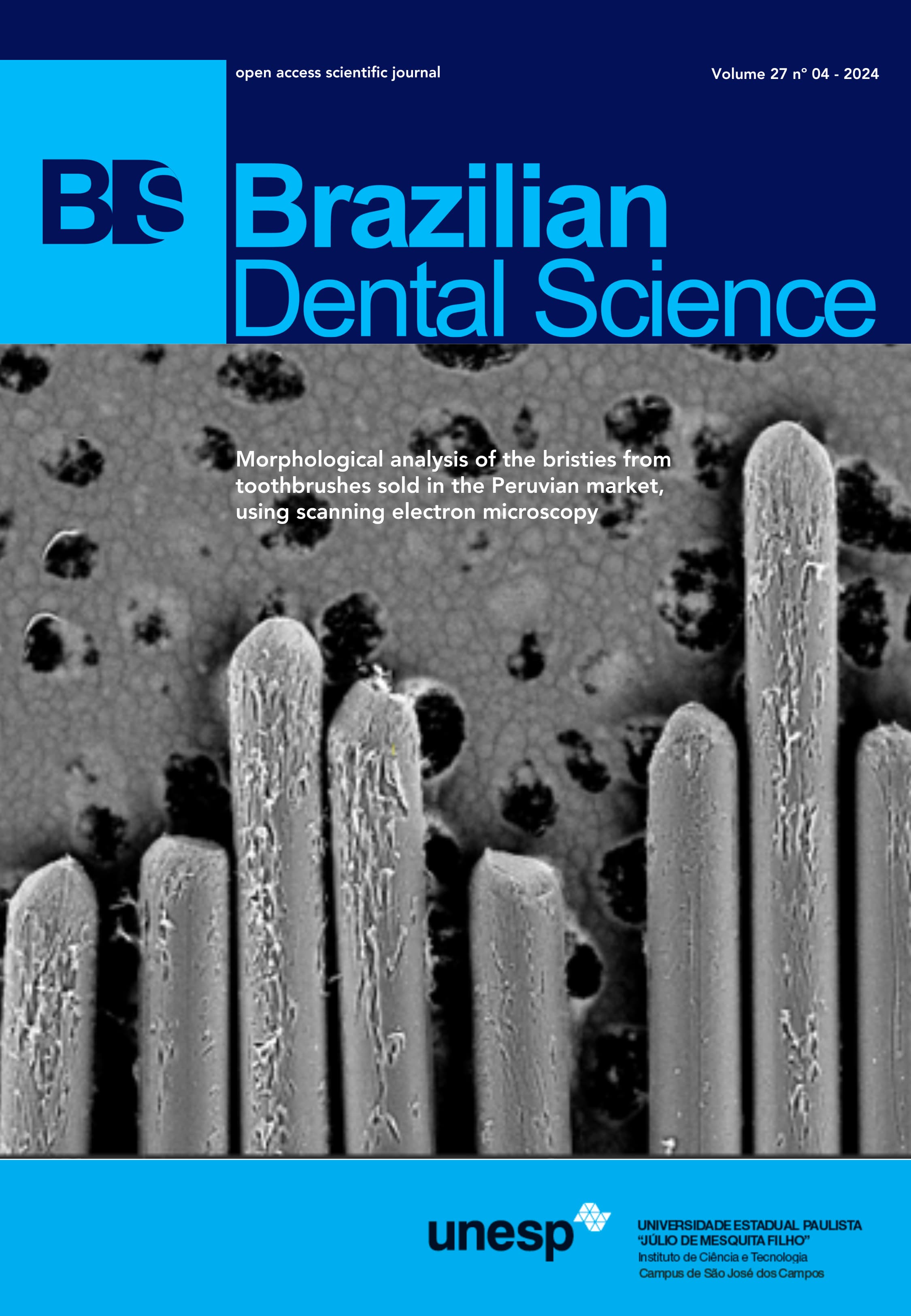Impact of gray background on tooth color shade matching: a comparison of visual and instrumental methods
DOI:
https://doi.org/10.4322/bds.2024.e4449Abstract
Objective: This study evaluates the impact of a gray background on visual tooth shade selection, focusing on various incisal translucency patterns in upper incisors. Material and Methods: Sixty-three clinicians assessed VITA 3D Master Shade Guide tabs representing right upper central incisors under different conditions, with or without a gray background. Translucency patterns (A, B, C) were considered, and standard tabs were defined using a clinical spectrophotometer. Statistical analyses, including repeated measures ANOVA and ordinal logistic regression, compared scores and agreement levels. Results: Darker tabs were selected for Case C, while Case B resulted in lighter tabs. A gray background increased lightness levels, enhancing agreement between visual and instrumental shade selection. Reduced agreements were noted in cervical areas and cases with higher incisal translucency. No significant difference was found among tooth thirds (p=.097). Conclusion: Using a gray background during tooth shade selection improved agreement between visual and instrumental shade selection. Incorporating this method can enhance tooth shade matching when relying on visual analysis. Introducing a cost-effective gray background can significantly improve agreement between visual and instrumental shade selection, addressing financial constraints associated with advanced tools. Clinicians can now implement a more reliable and accessible protocol, positively impacting the precision of esthetic restorations, especially in cases involving upper incisors.
KEYWORDS
Color; Color perception; Dental shade; Operative dentistry; Shade selection.
Downloads
Published
How to Cite
Issue
Section
License
Brazilian Dental Science uses the Creative Commons (CC-BY 4.0) license, thus preserving the integrity of articles in an open access environment. The journal allows the author to retain publishing rights without restrictions.
=================




























